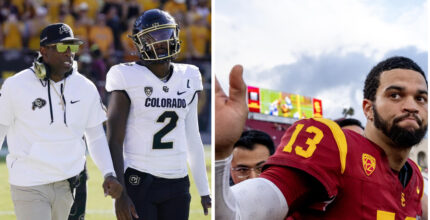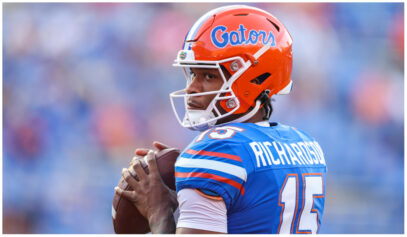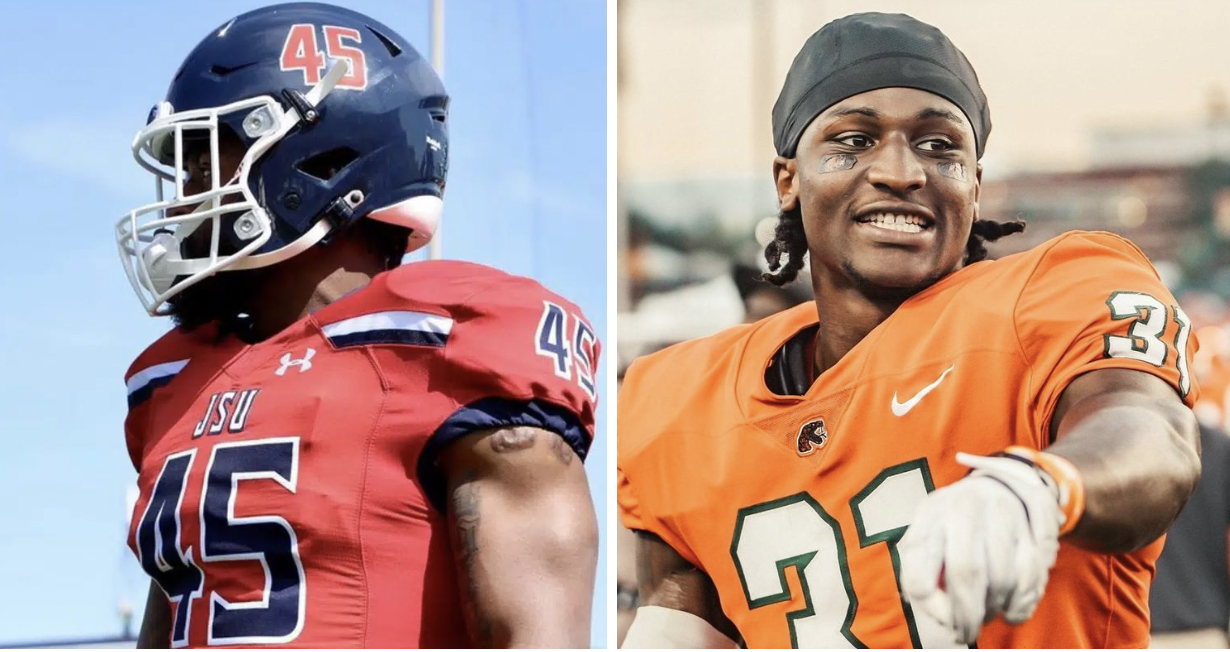In every era, there are jobs that become obsolete. The same goes for sports. In the NBA, the back-to-the basket center has been drifting away from the paint in the last decade like Republican leaders backtracking from support of Cliven Bundy. As the NFL’s blocking fullback position fades into obscurity while offenses spread the field, then seek to maximize the number of playmakers they can squeeze onto the field at once, another position is in the midst of becoming a vestigial connection to a bygone era.
The running back position isn’t as obsolete as the blocking fullback, but its talent pool has become so fungible that the emphasis on acquiring the elite at the position has declined dramatically.
Last week, former UGA Heisman winning running back Herschel Walker implied he had the physical composition to play running back in the NFL at the age of 52. He’s living in the past. Running backs these days get recycled at half that age
Oddly enough, running backs in the NFL today would probably prefer playing any other position. besides running back. In a story written by MMQB’s Robert Klemko, Cleveland Browns running back Ben Tate said that in 20/20 hindsight he would have played safety if he’d known the running back position would go the way of the iconic heavyweight boxer.
“I would’ve been something else, for sure. I’d have been a safety,” Tate told MMQB. “I had the opportunity to play it in college, but I wanted to be the guy to get the ball. I had no idea the position would be devalued, but hopefully I can break that trend.”
Chris Johnson's four-year, $8 million Jets contract was the most prodigious deal for a newly-signed running back in free agency. Those zeros pale in comparison to the guaranteed money for the best compensated safety in free agency. For references sake, Jairus Byrd signed a six-year, $56 million deal with New Orleans that ensured him $28 million guaranteed.
If there were five mistakes a general manager could make in the throes of the NFL Draft, falling in love with an offensive lineman’s 40 time, downgrading quarterbacks based on leaked Wonderlic scores, overvaluing Pro Day passing performances and violating employer laws during interviews with prospects would top the list.
Drafting a running back in the first round would be a cardinal sin. Besides Trent Richardson, there hasn't been a single back selected in the first 27 picks of the NFL Draft in the last four years. Richardson was traded by the Cleveland Browns a quarter of the way into his second season and was last seen listed on Witness Protection behind newly-minted San Diego Charger Donald Brown on the Indianapolis Colts depth chart.
In today’s NFL, the running game has become a supplementary asset while byzantine passing schemes have become an epidemic plaguing defenses inhibited by an obtrusive NFL rulebook. Teams threw the ball at an all-time high 56.6 percent of the time in 2013 and there's no reason to believe we've reached the end of that trend.
Thus, the position has become less lucrative while remaining more hazardous than any other on the football field. It doesn’t help that quarterbacks have been stealing the shine from tailbacks as the zone-read scheme has sprouted in NFL playbooks, turning quarterbacks into terrestrial yardage creators and making backup quarterbacks more essential in case of injury.
Running back skillsets have become more specialized and by the time many of them reach their primes, they’re eating up cap space and their bodies are deteriorating. These days running backs are considered short-term contract players and are signed in Costco bulk sizes.
To make matters worse, this draft is a black hole for tailback talent. Carlos Hyde is the No. 1 rated back on most draft boards, however, one year ago he was most known for allegedly slapping a woman in a nightclub, although video later cleared him.
Arizona’s Ka’Deem Carey 4.66 40 time nullified two years of 3,814 yards and 42 touchdowns. Carey will probably be drafted late in the second day or early in the third round. Based on his ability to find creases and shake defenders in tight spaces, he may still end up as a starter very soon.
It’s fairly common to stumble upon a diamond in the rough at the running back position late in the later rounds or in the undrafted free agent pool.
You’re just as likely to discover a tailback after the first and second rounds as you are to find one in the top 32 picks. There’s not too many degrees of separation between Hyde and Lache Seastrunk, the eight ranked back in this class.
The next generation of tailbacks are entering a volatile workforce. The key to surviving is adjusting to innovation. Running the ball is out of fashion, but yards after catch on bubble screens and the ability to run routes out of the backfield is where the position is heading. Hybrids are where the game is heading. Running backs are making plays outside the backfield just as centers are increasing their shooting range. There isn’t a great pass-catching tailback in this class, but specialty backs are out there.
Thumping workhorse back Andre Williams spectacularly ran for 2,177 yards as the in Boston College's one-trick pony offense while defenses stacked the box, but his presumed lack of big play ability at the next level because of his slow foot speed and clumsy hands.
22 years ago, Bo Jackson bounced a 3rd and 6 run to the outside, outran Seattle Seahawks 91 yards down the field into the end zone, then galloped into the tunnel until he was no longer visible. Jackson re-emerged seconds later, but the golden age of tailbacks won’t be returning. That play wouldn’t even happen in the modern NFL. On 3rd and 6 teams not named the Minnesota Vikings just don’t utilize the ground game anymore.
Running backs don’t have as much of an effect on the win-loss record as their quarterback counterparts. Even in the midst of his assault on Eric Dickerson’s single-season record, Adrian Peterson and the Minnesota Vikings were barely able to slither into the postseason. Now, juxtapose those results against Brady’s 18-1 season and Peyton Manning’s Super Bowl appearance after shattering each other’s single-season touchdown records.
As the emphasis shifts away from the running game, elite athletes will opt to become receivers or quarterbacks. This isn’t an anomaly. In today’s NFL, Jackson would be a 6-1, zone-read option quarterback, a slot receiver—or a safety. Iconic tailbacks are becoming fewer and fewer and the NFL Draft is proof of their declining importance.



